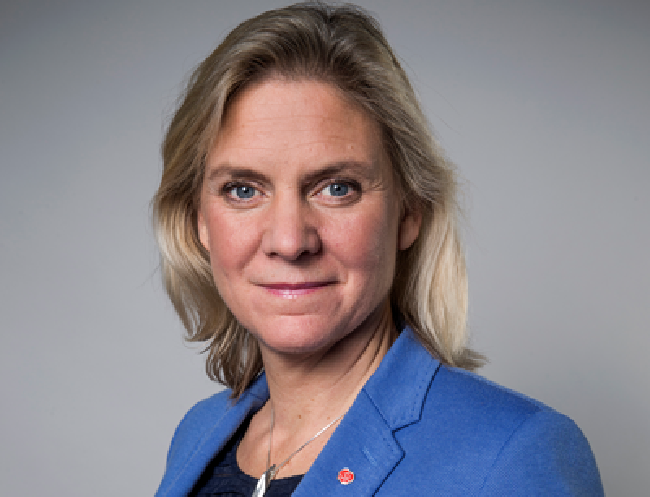Swedish economy still strong

Minister for Finance Magdalena Andersson
Photo: Kristian Pohl/Government Offices of Sweden
Sweden demonstrates continued economic strength, with positive and stable growth, reduced unemployment and substantially strengthened public finances with a surplus also this year.
This is the message from Minister for Finance Magdalena Andersson as she presented the Ministry of Finance’s latest economic and public finances forecast on Tuesday.
“The forecast shows a growth rate of 3.4 per cent this year and 2.4 per cent next year, and the Swedish model thereby continues to deliver high growth compared with the rest of the world,” said Ms. Andersson.
Unemployment is decreasing and, looking at the 20–64 age group, the employment rate is now at its highest level since 1992.
Added together over the forecast period, public finances have been strengthened by almost SEK 40 billion (about $4.3 billion) compared with this time last year. This is largely due to lower costs for sickness benefits and migration. The surplus for 2016 is estimated to amount to SEK 10 billion.
“The forecast today shows a surplus in public finances both this year and last year, in other words – two years of surplus out of two possible years,” said Ms. Andersson.
To better follow the distribution between various groups in society, the Ministry of Finance will begin to report using a new indicator in connection with the forecasts. This indicator involves the distribution of income, excluding capital income, using the Gini coefficient, a measure of income inequality in society.
“According to the OECD, growth in Sweden would have been more than 7 per cent higher between 1990 and 2010 if the income gaps had not increased so dramatically. Distribution of income is not just a matter of fairness – it is also important for growth,” said Ms. Andersson. “For this reason, we are now further highlighting the results of the analysis in this area.”
Swedish Government

